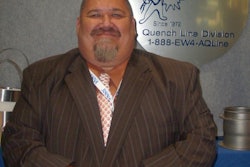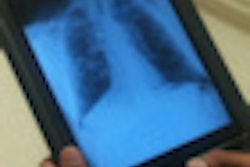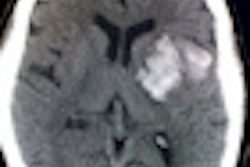NANCY, FRANCE - "Take archiving and communications out of PACS, and what is left?" asked Frédéric Lefevre, of the University of Nancy, in a session at this week's Volumetric Scanner Symposium on whether France can ramp up its effort to build a national network for sharing medical images.
Delivered during his presentation on the university's new Open System Archive program, Lefevre's question set a major theme for a session dedicated to radiology information management systems.
At issue is France's effort to modernize its radiology infrastructure by adopting filmless imaging on a widespread basis. But will the country go with a top-down approach, largely dictated by national authorities in Paris? Or will more nimble regional authorities get there first?
Left behind
France has found itself far behind other countries that have already put in place digital image management networks, according to a November 2010 report from the work group at the Ministry of Health charged with developing a catch-up plan (MPDSSIS, or Mission de Préfiguration de la Délégation à la Stratégie des Systèmes d'Information de Santé).
Among the 60 million imaging exams performed each year in France, only half are available in digital formats, according to the report, with 1,845 radiology centers currently using film-based systems.
Where 75% of private radiology clinics are equipped with some form of archiving system or PACS, only 20% of the public and nonprofit hospitals that play a critical role in generating diagnostic images are so equipped. Fewer than 10% of hospitals with less than 300 beds are equipped with PACS, and only 50% of those with more than 300 beds are PACS-capable.
Reviewing this dark situation, the work group sees a bright opportunity to bypass PACS, calling for the creation of a vendor-neutral architecture for archiving images. This solution, the group reasons, could at once bring ill-equipped clinics up to speed while distributing the burden of the investment across a wide base of users.
Laurent Tréluyer described the proposed scheme, called France Sans Film, to the 400 participants at the symposium, but admitted he was taken aback by the "fait accompli" of Lefevre's project, which will link hospitals throughout the Lorraine region with a more advanced network.
"I came here today to show you how we are going to take the 'A' out of PACS, but I see I am already behind as Lorraine is ready to remove the 'C' as well," he said.
The Open System Archive for Lorraine described by Lefevre moves beyond the proposed national network by not only providing a shared archive, but by also eliminating the communication function of PACS networks through a capability for direct, zero-footprint, cloud-based viewing of images on users' computers, without the requirement to install specialized software.
"Two years ago, RIS-PACS was an ideal couple for an imaging workstation, but it is now proving limited," said Lefevre. "The software is always behind, the users are overly dependent on the provider, and the transfer of images between institutions is slow and complex."
"This open-access platform is faster, and it is possible to deconnect the choice of modality from the tools for postprocessing," he continued. "So if you ask me whether your next workstation will be in the cloud, I would answer, why not?"
Expected to handle more than 500,000 images in its first year, the Lorraine network developed by Paris-based Bull-EMC2 will archive images using diagnostically acceptable irreversible compression (DAIC) according to recommendations of the European Society of Radiology, Lefevre said.
The national program
Meanwhile, Tréluyer acknowledged his national France Sans Film program faces a number of barriers to implementation beyond the technologies it proposes.
He reminded symposium participants, many of whom are heads of radiology departments across France, that the work group has not yet received a reply to questions it posed at the congress for the Society of French Radiology (Journées Françaises de Radiologie, JFR) in October, 2010.
The responses to these questions on issues such as the required period for storing images or preferred image formats affect the design of the architecture, he said.
"The national government has not yet made a decision on the proposed program and I am waiting for the green light from the Ministry of Health," Tréluyer told AuntMinnie.com.
Funding for France Sans Film is also problematic, with a complex formula that ends up financing only half of the required investment. Impatient with the cumbersome Paris-based decision-making, French radiologists began on a regional basis to link hospital centers with supporting clinics.
Even the national program is built around a regional program that Tréluyer described as a pilot for the model to be offered nationwide. Based in île de France, the region surrounding Paris, the Projet Région Sans Film in mid-January began an 18-month process of linking 30 participating institutions.
"France is organized by regions, and each region is working on some kind of imaging project," Tréluyer said. "It is a bit frustrating because there is not yet a consolidation of efforts or a sharing of approaches."
"We cannot continue with an approach of 'laissez-faire,' " he said, leaving each region to independently build a network.
But at the same time, he acknowledged, "joining a government-run network for sharing images is not a natural step for radiologists."
By John Brosky
AuntMinnie.com contributing writer
January 28, 2011
Related Reading
Dose reduction trumps horsepower at French CT symposium, January 27, 2011
France goes online with national patient record initiative, January 21, 2011
Copyright © 2011 AuntMinnie.com



















